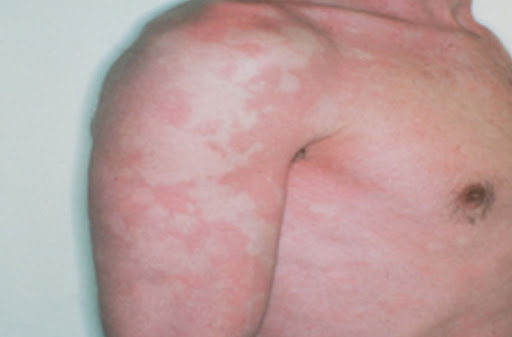CARCINOID SYNDROME

What is carcinoid syndrome?
Carcinoid syndrome occurs when a rare cancerous tumor called a carcinoid tumor secretes certain chemicals into your bloodstream, causing a variety of symptoms. Signs and symptoms depend on the chemicals released by the carcinoid tumor. The most common symptoms include:
- Skin flushing: Flushing can occur on the face and upper chest. Affected areas feel hot and change color, ranging from pink to purple. These flushing episodes can last from 30 seconds to 30 minutes and can be triggered by certain foods and alcohol.
- Facial skin lesions: Purplish patches with spider-like veins may appear on the nose or upper lip. These occur after the tumor has been present for some time.
- Diarrhea: Frequent, watery stools with painful abdominal cramps.
- Difficulty breathing: Asthma-like signs and symptoms, such as wheezing and shortness of breath. These may occur at the same time as flushing.
These tumors occur most commonly in your gastrointestinal tract, lungs or, rarely, in the ovaries.
What causes carcinoid syndrome?
Carcinoid syndrome occurs when metastatic carcinoid cells secrete serotonin or other chemicals into your bloodstream. Serotonin is involved in neural signaling pathways and mediates many of the symptoms of carcinoid syndrome. The syndrome occurs only 10% of those with carcinoid tumors, usually after metastasis. In most cases, the liver effectively degrades those chemicals before they have a chance to travel through your body and cause symptoms.
How is carcinoid syndrome treated?
Treatment for carcinoid syndrome involves treating the underlying cancer. However, because most carcinoid tumors don’t cause carcinoid syndrome until they’re advanced, a cure may not be possible. Select medications can be used to treat symptoms and make patients more comfortable.


